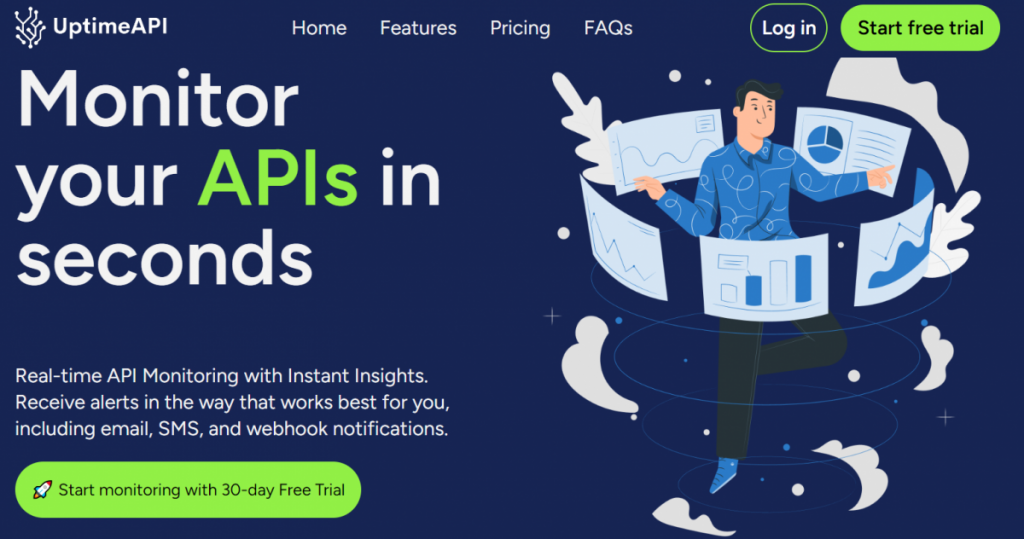In the fast-paced world of technology, ensuring the reliability and availability of online services is crucial. For businesses relying on APIs (Application Programming Interfaces) to power their applications, tracking the uptime of these APIs becomes paramount. One such tool that has gained prominence in this space is API Uptime Tracking. In this article, we’ll delve into the significance of API uptime tracking, explore the features of UptimeAPI, and discuss what the API response entails.
The Importance of API Uptime Tracking

Before we dive into the specifics of UptimeAPI, let’s understand why monitoring the uptime of APIs is essential. APIs serve as the backbone for various applications, connecting different software systems and enabling seamless communication. Any downtime in API services can lead to disruptions, affecting user experience, business operations, and ultimately, the bottom line.
API uptime tracking provides real-time insights into the performance of these interfaces, allowing businesses to identify and address issues promptly. It aids in preventing potential outages, optimizing system reliability, and maintaining a high standard of service for end-users.
Introducing UptimeAPI
UptimeAPI emerges as a robust solution for businesses seeking a reliable and comprehensive API uptime tracking tool. Designed with user-friendly features and advanced monitoring capabilities, UptimeAPI simplifies the process of keeping tabs on the availability of critical APIs.
Key Features of UptimeAPI:
- Real-Time Monitoring: UptimeAPI provides real-time monitoring of API endpoints, giving users instant visibility into their status. This ensures that any downtime is detected promptly, allowing for quick response and resolution.
- Historical Uptime Data: The tool maintains a historical record of API uptime, allowing users to analyze trends over time. This data proves invaluable for identifying patterns, understanding performance fluctuations, and making informed decisions to enhance overall system reliability.
- Customizable Alerts: UptimeAPI enables users to set up customizable alerts based on predefined thresholds. This feature ensures that stakeholders are notified promptly when API performance deviates from the expected norms, facilitating proactive problem resolution.
- Performance Analytics: The platform offers detailed performance analytics, including response time analysis and error rate monitoring. This information empowers users to optimize their APIs for peak performance, delivering a seamless experience to end-users.
- User-Friendly Dashboard: UptimeAPI boasts an intuitive and user-friendly dashboard, making it easy for both technical and non-technical users to navigate and extract valuable insights. The dashboard provides a centralized view of API health, simplifying the monitoring process.
Understanding the API Response

As part of API uptime tracking, understanding the API response is crucial. The API response is the data or message sent by the server in response to a client’s request. It contains information about whether the request was successful, any data returned, and potential error messages.
Components of an API Response:
- HTTP Status Codes: The API response typically includes an HTTP status code indicating the success or failure of the request. Common status codes include 200 (OK), 404 (Not Found), and 500 (Internal Server Error).
- Response Headers: These provide additional information about the response, such as the content type, date, and server information.
- Response Body: The response body contains the actual data or payload sent by the server. For successful requests, this may include the requested information, while error responses may provide details about the nature of the issue.
Understanding the API response is essential for effective troubleshooting and debugging. UptimeAPI’s detailed logging and reporting features facilitate the analysis of API responses, aiding in the identification of performance bottlenecks and potential issues.
Conclusion
In conclusion, API uptime tracking is a critical aspect of maintaining the reliability and performance of applications relying on APIs. UptimeAPI stands out as a comprehensive solution, offering real-time monitoring, historical data analysis, customizable alerts, and performance analytics.
Understanding the API response is equally important, as it provides insights into the success or failure of requests, aiding in the diagnosis of potential problems. By incorporating UptimeAPI into your API management strategy and gaining a deep understanding of API responses, you can ensure a seamless and reliable experience for both your applications and end-users API Uptime Tracking.
Read More: Company profile APIUsage Cases
